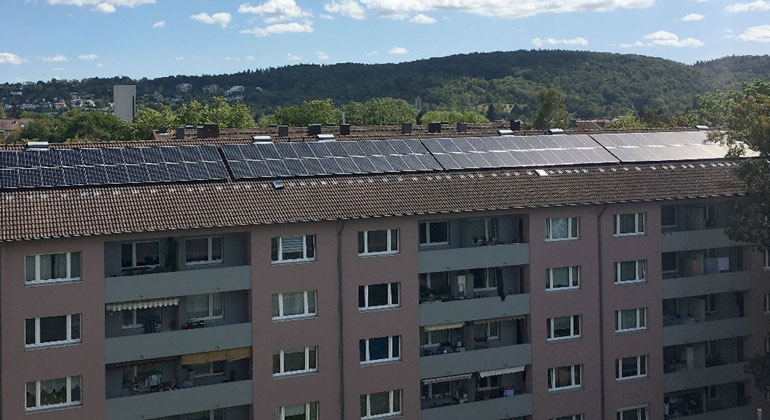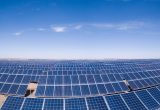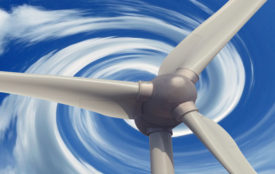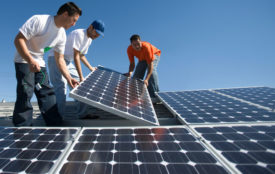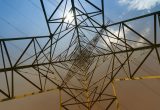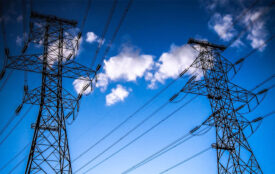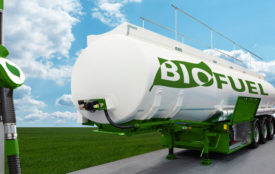Low Exergy Concepts for the Heat Supply of Existing Multifamily Houses
Heat pumps are a key technology for the heat transition, yet their implementation in existing multi-family buildings is a challenge. These buildings place special demands on the transfer systems for space heating and domestic hot water as well as on environmental heat utilization.
In the joint project “LowEx in the Building Stock,” solutions for heat pump, heat transfer and ventilation systems in retrofitted multifamily homes were analyzed, developed and demonstrated. In the final project report, the Fraunhofer Institute for Solar Energy Systems ISE, the Institute for Sustainable Systems Engineering INATECH of the University of Freiburg and the Karlsruhe Institute of Technology KIT present the resulting solutions and some exemplary demonstration objects.
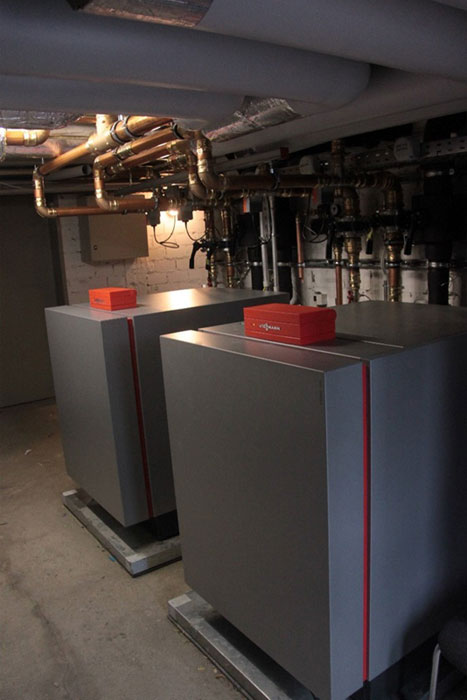
A look at the building sector today makes it clear that the biggest lever for the heat transition are existing buildings: 62 percent of existing buildings were constructed before Germany’s first Wärmeschutzverordnung (Thermal Insulation Regulation) in 1977, and these currently account for around two-thirds of the final energy consumption in the sector. Heat pumps offer considerable potential for reducing CO2 emissions if they are used in so-called LowEx, or low exergy, systems. Due to low temperature differences between the heating medium and the useful heat, heat pumps can operate very efficiently. While heat pumps are increasingly used in single and two-family homes in new and existing buildings, they are still not widespread in multi-story residential buildings. Fraunhofer ISE has been working for many years on this topic which has gained growing attention recently due to increasing energy prices.
“The challenges here lie both in the higher heat output required from the heat generator and in the building location that is often in densely built-up neighborhoods. In addition, radiators and domestic hot water systems in multifamily buildings often require high flow temperatures,” explains Jeannette Wapler from Fraunhofer ISE. Therefore, the solutions in the project focused on the two topics of tapping environmental sources in the built environment and lowering system temperatures.
Holistic Analysis of Heat Supply and Renovation
For the analysis, system concepts were allocated to different types of multifamily buildings by carrying out systematic investigations and evaluations. Here the user comfort, economic aspects and achievable reduction in CO2 emissions were considered. The research team conducted a holistic analysis of the heat supply, from the low-temperature source up to the heat transfer to the rooms. In the analysis, the potential of implementing solar components on the building envelope, the possible combinations of environmental heat sources and the use of hybrid systems were considered, among other things.
New LowEx Technologies for Multifamily Houses
The research team worked with industrial partners to develop new LowEx components and systems for multifamily houses in five subprojects. For example, a multi-source heat pump system was developed together with the heating manufacturer Viessmann in the HEAVEN project. In city centers, there is often not enough space to drill boreholes for geothermal probes. The use of outdoor air as a heat source is comparatively inefficient and has a higher noise emission. The multi-source heat pump system combines the advantages of the two heat sources: outside air and ground. With this combination, a smaller drilling area is achieved yet the high efficiency of a brine heat pump is still achievable.
“Decentralized indoor ventilation also plays an important role in the energy retrofit of existing multifamily houses. There is considerable energy-saving potential that is yet untapped in this area. Also, subsequent installation is significantly easier and more cost-effective,” explains Prof. Andreas Wagner from KIT. In the project, the control of decentralized ventilation systems was optimized and a method for evaluating these devices was developed. To do this, an occupant-centered, self-learning controller for decentralized pendulum fans was developed at Fraunhofer ISE and successfully demonstrated in the KIT Energy Smart Home Lab.
In other projects, a hybrid system (heat pump in combination with fossil-fueled heat generator), a heat pump with a refrigerant circuit based on the natural refrigerant propane, façade-integrated ventilation units and high-temperature heat pumps were developed.
Demonstrators Prove Feasibility of Heat Pumps in Existing Buildings
The supply technologies developed in the singular sub-projects were demonstrated in three exemplary refurbishment projects. Detailed measurements and evaluations accompanied the installations in the multifamily houses. “The collaborations with the housing industry, the heat pump industry and the energy suppliers, who all contributed their different perspectives to the project, were very valuable,” explains group leader Dr. Constanze Bongs from Fraunhofer ISE.
The scientists analyzed both the performance of the low exergy systems installed as well as the energy retrofit process itself.
In cooperation with KES Karlsruher Energieservice GmbH, the team realized a complex energy supply concept for five existing apartment buildings with 160 apartments in Karlsruhe-Durlach. The new energy supply concepts are based on a smart combination of technologies: A photovoltaic system is installed on each of the five building roofs. For two of the buildings, heat pumps and a peak-load gas boiler were installed to supply heat. To achieve low-CO2 heat generation in these buildings, the heat pumps were designed to have the maximum possible coverage rate with the gas boiler operating correspondingly seldom. In one of these buildings, a heat pump system with a combined heat source (outside air, geothermal heat) which was developed in the HEAVEN project was installed. Another heat pump system uses hybrid PVT collectors as the only heat source. The three other buildings are connected to a local heating network supplied by natural gas CHP units. The electricity generated from the systems is used to economically operate the decentralized heat pumps. The heat pumps, CHP units and PV systems are all interconnected and controlled by an energy management system in order that the heat pumps operate as economically as possible using locally generated electricity.
In the first six months of operation, the HEAVEN multi-source hydraulics achieved high source temperatures with an average value of 8 degrees Celsius, which contributed to a good annual performance factor of 3.2 during the first half year of operation (February – July 2022) in which the evaluations took place. The fact that the peak-load gas boiler accounted for 31 percent of the heat supplied is primarily due to the high temperature requirements for hygienic domestic hot water. Overall, the system achieved CO2 equivalent emission savings of 42 percent relative to the project start. If compared relative to the original uninsulated building construction in 1963, the emission savings are equivalent to 73 percent. Optimized operation with lower gas consumption, higher heat pump efficiency or using an electricity mix with less CO2 intensity can further reduce CO2 emissions in the future. The model energy concept can be transferred to other neighborhoods with existing multifamily buildings.
“The demonstrator multifamily houses in this project have proven the feasibility of retrofitting multifamily houses with heat pumps and low exergy technologies. To achieve optimal operation, it is important to consider the given situation, including the heat distribution systems and the amount of space in the heating cellar. During the retrofit, it is also essential to perform a hydraulic balance of the heating system and check if flow temperatures can be further reduced, e.g., by replacing individual radiators,” emphasizes Dr.-Ing. Manuel Lämmle, who is project manager at INATECH.
The team sees further need for research in this area. In particular, the development of solutions to replace single-story gas heating systems and for the provision of high temperatures and domestic hot water heating with heat pumps. In the new project LCR290, heat pumps with the environmentally friendly refrigerant propane are being developed for use in multifamily houses.
Downloads and Links
- Press release Low Exergy Concepts for the Heat Supply of Existing Multifamily Houses [ PDF 0.44 MB ]
- Heat pump system HEAVEN. [ JPG 5.08 MB ]
- Final report (in German)
- PVdach.jpg [ JPG 2.32 MB ]
